A balanced mix of the old and new, Rome is a city that successfully reflects rich, 28-century-old stories while displaying growth and evolution. Think of haunting ruins, modernistic cafes, and layers of cultural character, and you’ve got Rome in the picture.
But unlike the peaceful, ancient city painted on travel books, Rome is far from being black and white. Its streets are beaming with energy as travelers and scooters roam from corner to corner. Its artistically-sculpted fountains and endless display of Baroque and Renaissance art are matched with contemporary trattorias and modern-day bars that spell romanticism.
With a lifetime of stories to tell, Rome gives you countless reasons why you should explore its cobblestone streets. Be it visiting the Colosseum or enjoying authentic Italian delicacies, we are here to give you a complete travel guide to Rome.
What to Expect When You Travel to Rome
Currency: Euro (€)
Language: Italian is the main language in the city, but English is also used as a 2nd language by many of its locals.
Transportation: The main public transport in Rome is ATAC, which has two main Metro lines. You can purchase either a 24-hour pass or a single ticket. There are also trams, buses, and taxis in the city. However, unlike in other cities where you can easily hail a taxi, you can only find one on a designated taxi bay.
Credit Cards and ATMs: It’s not hard to spot ATM machines in Rome and most establishments here also accept credit cards. But as in traveling to other cities, it’s always wise to bring cash (euros) for small transactions.
Plug: Type E
Time Zone: Central European Time (UTC+1). Daylight saving time that falls from the last week of March to the last week of October shifts its time zone to UTC+2.
Weather: On average, the temperature in this Italian city is at around 60℉. January is the coldest month of the year with temperatures dropping to 46℉. July, on the other hand, is the hottest month of the year with temperatures usually increasing to 78℉.
Best Travel Times: March to May (spring) and September to October (fall) are the best times to travel to Rome, climate-wise.
Safety: Rome is generally a safe place, but since it is a major tourist spot, its massive number of tourists also attract pickpockets. When exploring Rome, be more cautious especially if you’re traveling alone. Don’t leave your belongings unattended and practice safety measures when traveling. You know the drill.
Travel Costs
Travel costs to Rome are highly dependent on your priorities and your length of stay. But to give you an idea, below is the average costing for two main travel expenditures: food and accommodation. Note that rates may always vary, so it’s wise to always make an allowance in your travel budget whether you’re traveling to Rome or to other cities.
Food: Depending on where you eat, a single meal may cost €25 to €35 per person. Meals that are €35 above are usually offered on touristy spots. So if you want to save up on food, it’s practical to avoid dining in on restaurants within these places. Trastevere is a great spot for eating out, and you can also try out light snacks around the city that cost more or less €7.
Hostel: Booking hostels can help you significantly cut down on travel costs. Dorm rooms with 6-bed capacity can go as low as €13 per night. There are also private rooms available in hostels, but the fees can skyrocket to €50–an amount better spent in a hotel.
Hotel: You can find many luxurious hotels in the city, but if you are looking for a budget hotel, Rome has two-star hotels that cost about €40 a night. If you’re in the city for a week or two, you also have the option to book a shared Airbnb room for less than €15 per night.
NOTE: It’s hard to give you a ballpark figure when you’re traveling to an expensive city like Rome. But overall, if you’re backpacking to Rome, it’s safe to set aside around €45 to €85 per day when touring around this major city. But if budget is no issue and you want to experience the best of the city, book hotels that are around major tourist attractions. The price will double or even triple, but it’s going to be worth it. Just imagine waking up, getting dressed, and instantly walking out to the heart of the city and you’d get why so many tourists book these hotels despite their hefty price.
Travel Guide to Rome: Drafting a Travel Plan
Visiting a tourist attraction, taking quick selfies, and hopping to the next landmark right after is probably the worst thing you can do when you travel to Rome. The city wasn’t built overnight, and it can’t be explored overnight, either. Rush into its landmarks and you’d totally miss the point of visiting Rome–understanding the stories that lay beneath its streets and architectural beauty.
Rome deserves to be explored and experienced, and lengthier stays give you an opportunity to do so. If there’s no way you can extend your visit, plan a stay of at least 4 days. This will give you enough time to really experience some of its major tourist spots without feeling rushed. But, then again, it’s a big city so even if you do spend a week in Rome, you’ll still find so many areas to explore.
Booking a Hotel
If you plan to book a hotel, check nearby tourist attractions surrounding the area, especially if you only have a few days to stay in the city. While checking maps can guide you through the process, it can also be fairly inaccurate to solely rely on these maps. What can look close on paper can mean a 30-minute trip by foot on major tourist attractions.
So aside from checking on maps, comparing rates and location of hotels or hostels near landmarks via online sites is also a great way to plan around your trip. By booking a hotel first, you can pinpoint the nearest landmarks and create a strategic travel plan based on your location.
Rome’s Best: Top Travel Destinations You Should Explore
Reflecting a strong character and a distinct history, Rome is a feast of iconic landmarks. The best thing about traveling around the city on foot is that you get to explore some of its must-see sights without even adding them to your itinerary. They’re literally just there, side-by-side, waiting for you to explore.
But with so many amazing attractions in one city, it can be overwhelming to plan your trip on your own. To help you get around, we’ve highlighted three key areas you should visit: Central Rome, Ancient Rome, and Vatican City. Here, we’ll also explore some of the tourist attractions that put these areas on the map of every traveler.
Central Rome
Centro Storico, as it is locally known, is named as the “modern center” of Rome. Its century-old structures are sprinkled with contemporary restaurants and cafes that give it a modernistic touch. So if you want to experience the best of the old and the new, this is where those two worlds meet.
Practically where fine dining and the nightlife happens, Central Rome is a great base if you want to explore the different cities and districts of this Italian capital. It is most famous for Roma Termini, Rome’s central train station.
The southeast part of the station is home to San Lorenzo, a bustling neighborhood where you can drink and party all night. Home to universities, this area is popular among local students for its concoction of thrift shops, hip bars, and restaurants.
But as a word of caution, it is safe to avoid Roma Termini at night to avoid pickpockets. If you need to use the train during this time, make sure you aren’t traveling alone.
Trevi Fountain and the Spanish Steps
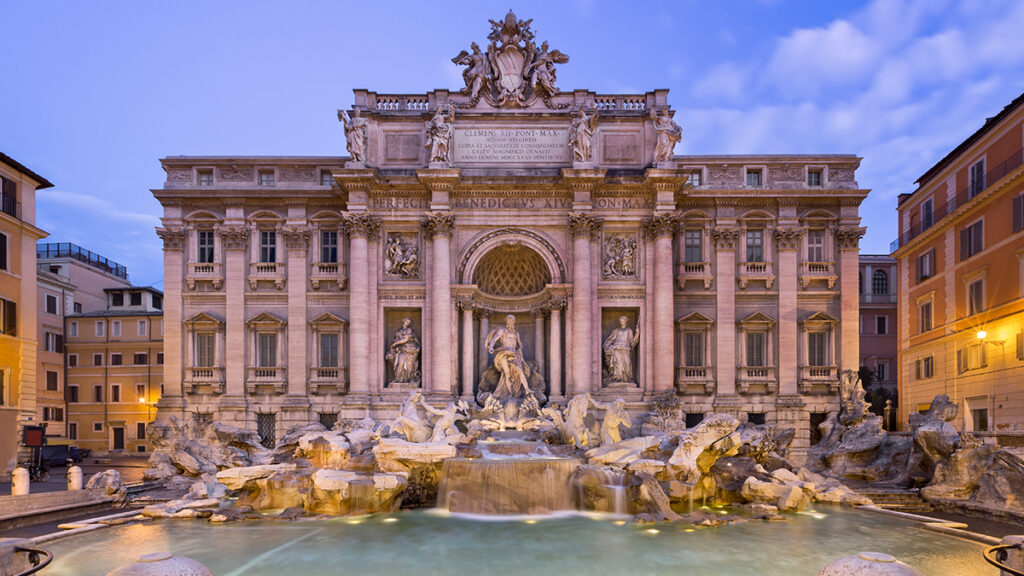
- Admission: Free (except for guided tours)
- Closest station: Line A – Barberini Station (for Trevi Fountain); Line A – Spagna Station (the Spanish Steps)
- Bus Stop: Largo Chigi and Fontana di Trevi
The Trevi Fountain is an all-star cast that doesn’t need any introduction. As the grandest fountain in the world, this famous landmark has been in the spotlight for decades. It draws thousands of tourists every year and earns a whopping €3000 every day–that’s over a million euros every year. Preserved for a cause, the fountain’s proceeds go straight to charity, so stealing its magical coins is considered a crime.
Make a wish, toss a coin, and make somebody else’s dream a reality. Who knows? Your wish might come true, too! And when you’re done tossing coins in this ethereal fountain, walk a few blocks to see the Spanish Steps. An IG-perfect landmark built at Piazza di Spagna, this cinematic, 135-step tourist attraction is also one of the most-visited spots in Rome, thanks to Audrey Hepburn’s “The Roman Holiday”.
The Pantheon
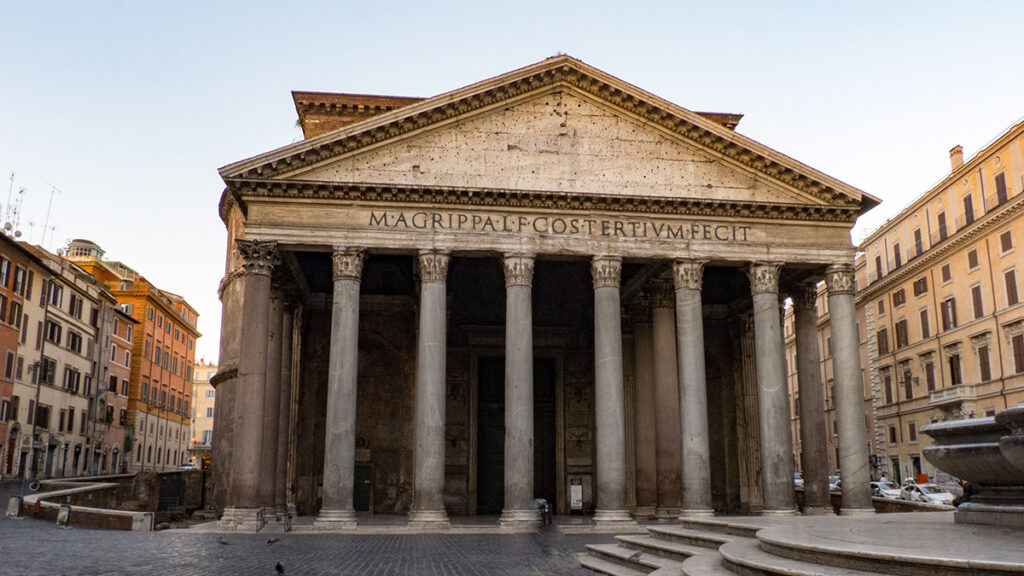
- Admission: Free
- Closest station: Barberini and Spagna Station (around 20 minutes away on foot)
- Bus Stop: Argentina Station
- Operating Times: 9 am to 7.15 pm every except Sunday; 9 am to 5.45 pm (Sunday)
How about a mid-afternoon stroll at the Pantheon after your trip to the Trevi Fountain and the Spanish Steps? Constructed back in 126 AD as a temple for pagan gods, the Pantheon is a historic landmark distinct for its large columns and its even larger brick dome.
When you travel to Rome, avoid public holidays to make sure all landmarks are open for tourists. The Pantheon, for one, isn’t open during holidays. Also, it’s practical to visit this architectural landmark the same day you travel to the Trevi Fountain since it isn’t close to major stations.
Piazza Navona
- Admission: Free
- Closest station: Barberini
Piazza Navona is a square that’s home to artistic (and gigantic) Baroque fountains, restaurants, and mansions. Also close to Trevi Fountain, this is a great spot to just sit down, grab a glass of wine, and watch travelers pass by.
Church of Santa Maria Maggiore
- Admission: €3
- Operating Times: 7 am to 7 pm
The largest Catholic Marian church in the city, the Church of Santa Maria Maggiore sits atop the Esquiline Hill. Inside, you’ll see one of the grandest major basilicas in the world, so stopping by to whisper a prayer is definitely a must, first-time visitor or not.
Ancient Rome
Ancient Rome and Central Rome are the hearts of the city. Home to the most iconic tourist spots, this is where you’d see a parade of luxurious hotels, restaurants, and souvenir shops. You’ll never run out of places to explore in this part of the city, but if you’re on a budget, this isn’t the perfect place to book a hotel. The prices are usually more expensive since the hotels are strategically located near world-renowned landmarks.
The Colosseum, Roman Forum, and Palatine Hill
- Admission: €12 (online reservation: +€2)
- Closest station: Metro Line B – Colosseo Station
- Operating Times: 8.30 am to 7 pm (The Colosseum and Roman Forum); 8.30 am to an hour before sunset (Palatine Hill)
The fantastic 3 in all Roman tours, the Colosseum, Roman Forum, and Palatine Hill are perched on the same area. You can either fall in line to buy a ticket or save time by making online reservations, which cost an additional €2. For us, time is always of the essence here, so we definitely recommend the latter. If you can stretch your budget, you can also book guided tours online, which give you better dynamics.
The Colosseum is fairly hard to miss because of its gigantic size. If you are a fan of Gladiator, you’d surely be familiar with this site. As the largest amphitheater ever built, this ambitious Roman landmark is only half of its former glory but is no less stunning. Its architecture is a glimpse of gladiator battles in the past, making it a top-class tourist spot.
The Roman Forum, on the other hand, vividly reflects the past with its multitude of ancient ruins. As Ancient Rome’s main square back in the days, the Roman Forum was once the center where people gathered and socialized.
Want the best view of the city? Head on down to Palatine Hill, which sits on the Seven Hills of Rome. From here, you can get access to past emperors’ palaces–or what is left of them.
The Capitoline Hill Museums
- Admission: €11.50
- Closest station: Colosseum Station
- Operating Times: 9.30 am to 7.30 pm
The Capitoline Hill Museums are made up of two museums: the Palazzo Nuovo and the Palazzo dei Conservatori. The former puts the spotlight on Roman and Greek Sculptures, while the latter houses famous frescoes and galleries. So if you’re a fan of art, these sites are a must-visit. The admission fee grants you access to both these museums. Plus, the Capitoline Hill itself gives you impressive views of the city. Here, you can simply pause, grab an espresso, and just appreciate Rome’s beauty.
Church of San Giovanni in Laterano
- Admission: €2
- Closest station: San Giovanni (interchange station – Line A and Line C)
- Operating Times: 7 am to 6.30 pm; closed at lunchtime
The first-ever basilica built in Rome, the Church of San Giovanni in Laterano continues to be the sacred worship place of the Pope. Its eastern facade was built back in the year 1736, and it is visible from as far as the Vittoriano monument. The older northern facade was designed much earlier by Domenico Fontana back in 1586.
If you have a list of Roman basilicas you want to explore, this church should definitely be at its top. Its impressive story is wrapped by century-old sculptures that you cannot see anywhere else in the city. Named as “The Mother of all Churches,” this basilica continues to be the best and the grandest catholic church on earth.
National Roman Museum
- Admission: €12 (full ticket)
- Closest station: Line A – Termini or Repubblica
- Operating Times: 9 am to 7.45 pm; closed at lunchtime
Our travel guide to Rome simply cannot be complete without visiting its National Museum. Housing a collection of Roman art, the National Museum of Rome showcases ancient artifacts, mosaics, and frescoes that reflect the city’s history.
Tip: If you want to visit nearby bookstores and souvenir shops, arrive early because these establishments usually close earlier than the museum does.
Vatican City
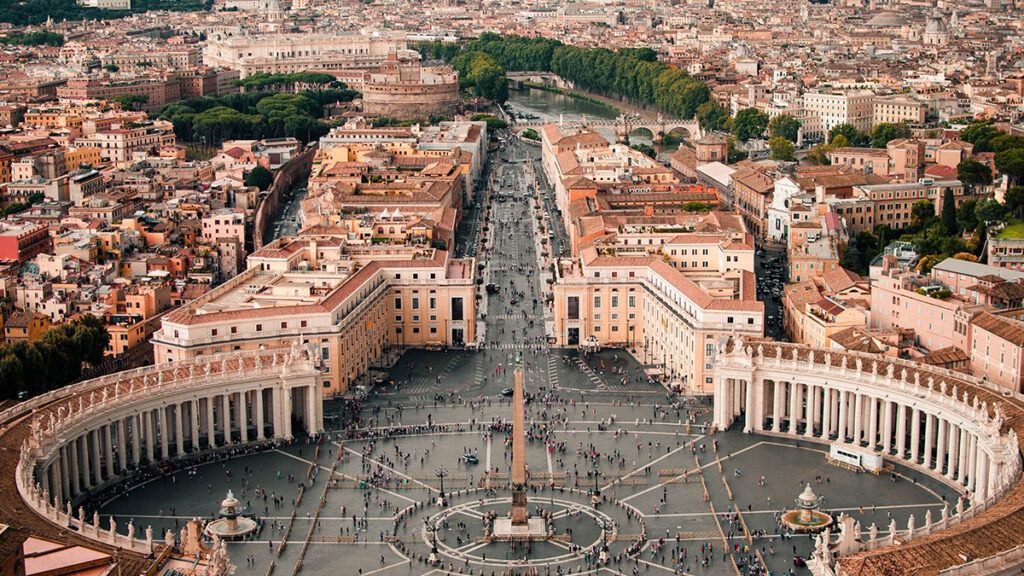
Relics, museums, and decade-old architectures are the jewels of Vatican City, one of the most-visited sights in the world. As the major center for Catholics, the Vatican is a sacred city that greatly upholds religious and cultural beliefs. But did you know that the Vatican City is not a part of Rome? The smallest independent state in the world, the Vatican is surrounded by Rome and is accessible via this Italian capital.
If visiting the Vatican is your main reason for flying to Rome, make sure to dress up for the occasion. Dresses and shorts above the knee and any clothing that reveals your shoulders are prohibited in many establishments. So if you want to make the most out of your trip, double-check your OOTDs and plan your outfits accordingly.
The Vatican Museum and the Sistine Chapel
- Admission: €17 (online reservations +€4)
- Closest station: Line A – Ottaviano-S. Pietro
- Operating Times: 9 am to 4 pm (Vatican Museum and Sistine Chapel)
Every travel guide to Rome includes a visit to Vatican City and its major wonders. Some of the most prominent spots in this city are the Vatican Museum, which contains around 70,000 pieces of diverse artworks, and the Sistine Chapel, which boasts an artistically-painted ceiling by no other than Michelangelo.
The queues in these major attractions are extremely long, so it’s best that you book online and arrive by 8.30 am. Otherwise, you might miss out on visiting this special landmark.
St. Peter’s Basilica and St. Peter’s Square
- Admission: Free (main church); €8 (stairs to the dome); €10 (elevator to the dome)
- Closest station: Line A – Ottaviano-S. Pietro
- Operating Times: 7 am to 7 pm (April to September); 7 am to 6 pm (October to March)
St. Peter’s Basilica isn’t just the largest church on earth. It’s also A+ in terms of reflecting Renaissance architecture. Plus, the basilica also gets you access to artworks by Michelangelo and Bernini. When you visit the church, we highly recommend entering the dome to see breathtaking city views.
Extra Travel Tips
Buy the Rome Pass–or Not
There are different types of travelers. While some focus on exploring museums and other architectural establishments, others embark on a full gastronomic experience. If you fall on the first type (or if you’re both), buying a Rome Pass is a great way to cut queue lines and fully enjoy Rome’s greatest treasures. A Rome Pass, also called Roma Pass, is practically a tourist card that gives you unlimited access to public transport for 2 or 3 days, along with discounts on ticket prices on some of the city’s major landmarks.
Skip the Souvenir Shops
You’ll be surprised by how much you can save from buying from flea markets instead of souvenir shops. So instead of buying from every shop you see, take the practical route and head to the city’s flea markets where you can see an assortment of souvenir items at a much lower price.
Take Advantage of the City’s Water Fountains
Tap water in Rome is generally safe to drink. If you’re out for a day tour, you can also refill your water bottles from water fountains abundant in the city.
Check Out Trastevere
You won’t find Trastevere in the top must-see sights in Rome, but it’s a great place to experience authentic Italian cuisine at a lower price. If you have time, pay this neighborhood a visit to check out its local culinary scene.
Final Thoughts When You Travel to Rome
Visit Rome the first or second time and you’ll barely scratch its surface. When you travel to a timeless tourist destination like Rome, don’t forget to focus on experience instead of counting the tourist spots that you visit. Traveling is, after all, about the experiences we make.

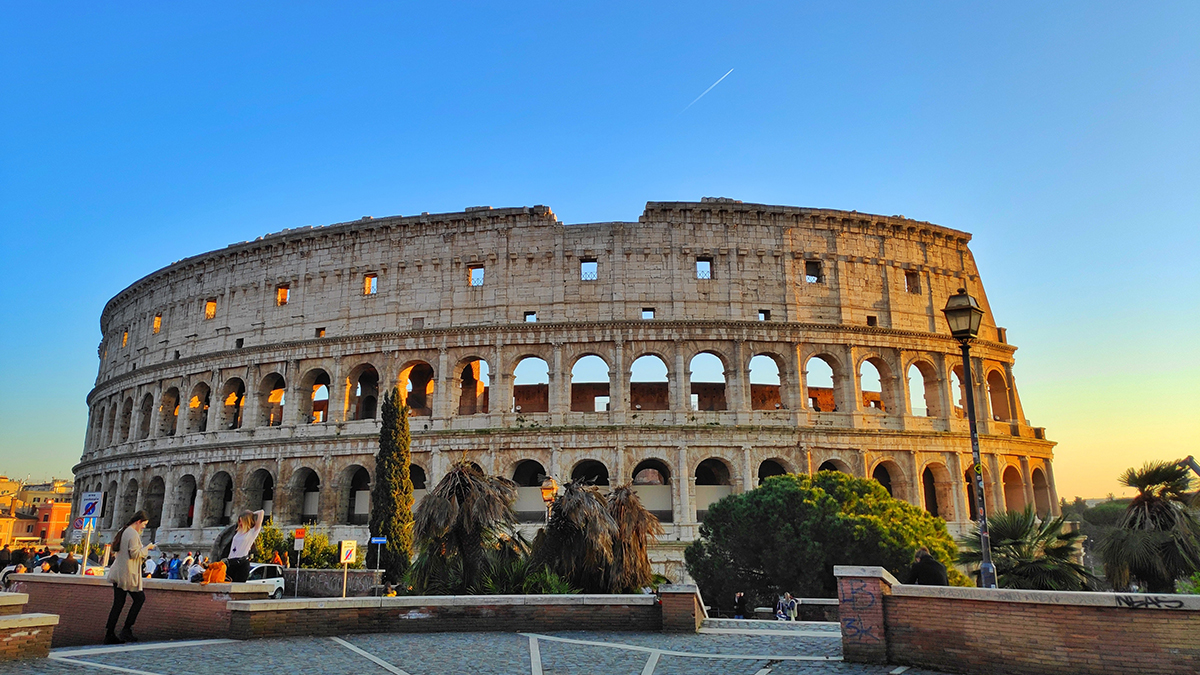



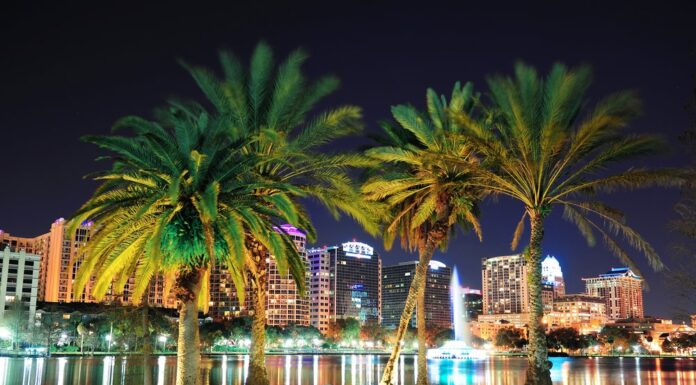





[…] Colosseum in Rome, […]
Comments are closed.